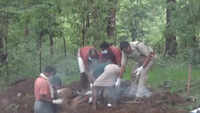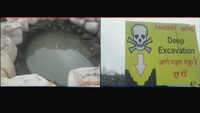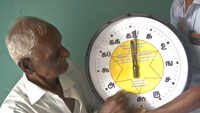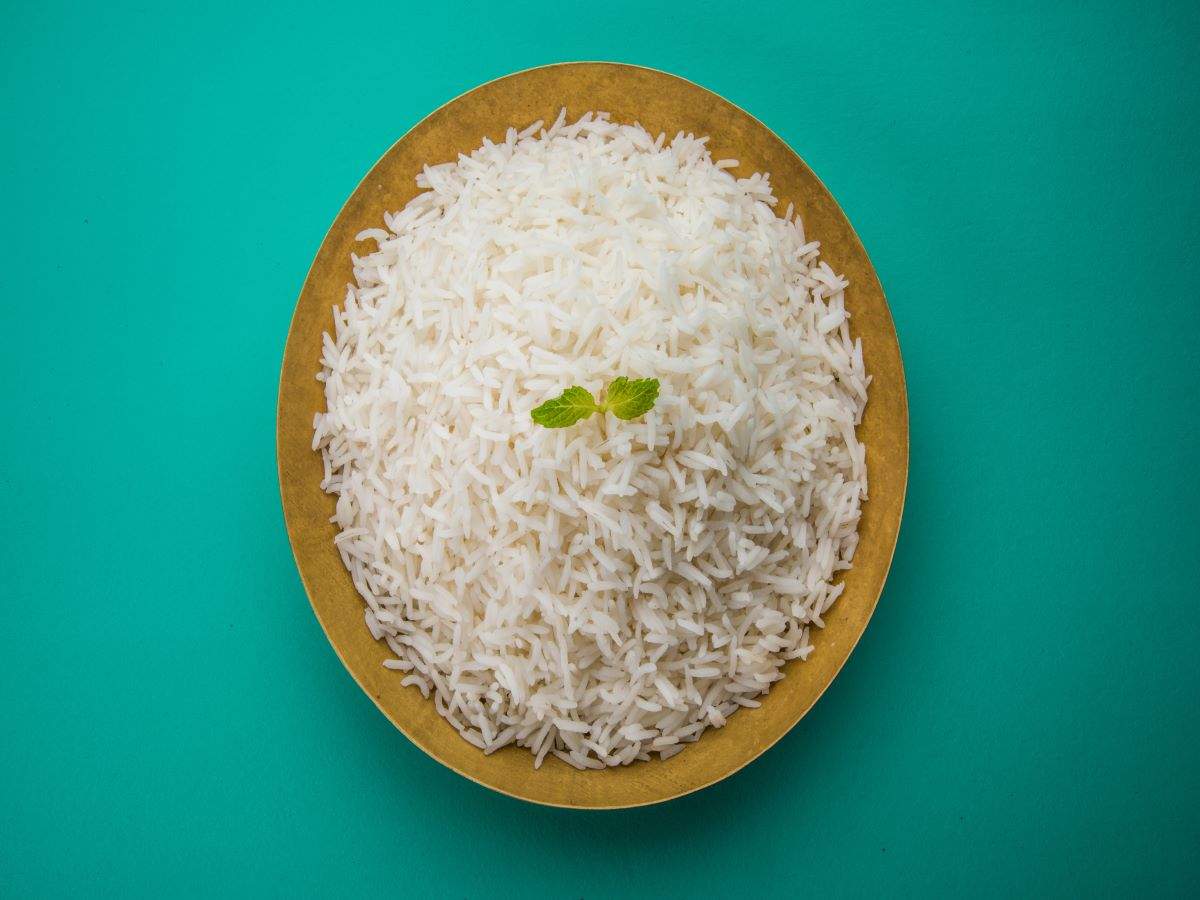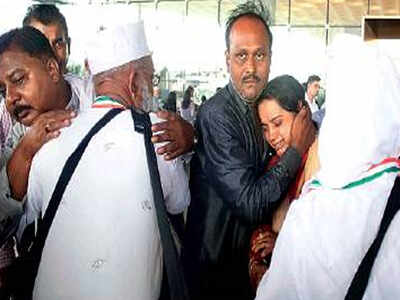
Sixty five-year-old Aziz Bakhsh cried as a child does when he is yanked off his mother's embrace on his first day in school. The kurta pyjama-clad Bakhsh's son Aijaz comforts his father, offering him a bottle of water. A few rows behind them, Shaikh Nabi and his wife Farida Bi speak to their relatives via video calling on their son Shakeel's mobile phone. The couple turns emotional as they say 'Khuda Hafiz' to their son and nephew before they push their trolleys past the security guards and inside the massive glass door.
They were part of the first of batch of 450 Haj pilgrims who took off from Chhatrapati Shivaji Terminus on Saturday. Hailing from Madhya Pradesh, these pilgrims were not in their ehram (simple two unstitched pieces of white cloth for men and a modest white shalwar kameez and scarf for women) because they went first to Medina and would put on ehram once they leave Medina for Mecca later. Counting their tasbeeh (rosaries) and listening to the speakers, the pilgrims didn't complain if they felt uncomfortable crammed as they were in the hot, humid parking lot (P9), one floor down the departure. "You will have to endure some hardships during the journey. But the rewards in the form of divine blessings after performing Haj are huge," said Ibrahim Bhaijan, member of the Central Haj Committee and coordinator for the Haj pilgrims from Maharashtra. He, along with many others, including former ministers Naseem Khan, Kripa Shankar, Consul-general of Kingdom of Saudi Arabia Saad Zafar Algarny, Haj Committee's CEO M A Khan, mayor Vishwanath Mahadeshwar, counseled patience to the pilgrims and requested them to pray for them and India too. Minority affairs minister Mukhtar Abbas Naqvi gave it a miss.
The five-day Haj rituals will begin in second week of August. After first performing Umrah in Mecca, the pilgrims will cast off their ehram. On eighth of the Islamic month Zilhijjah (August 9), pilgrims will make neeyat or pledge to perform Haj pilgrimage by donning the ehram again and subsequently move to the tent city of Mina. Next day, they will travel to the massive plain of Arafat for the congregational prayers. After day-long vigil at Arafat, they will leave in the evening for a place called Mudazilfa to halt briefly in the night before they reach their tents in Mina by morning. This is the day of Eidul Azha (Bakrid) and the first day of stoning the Jamarat, the stone pillars symbolizing devils. On their return from the stoning ritual, the pilgrims will sacrifice animals, cut their hair, cast off their ehram and wear normal clothes. They will stone the devils on two more consecutive days before they go for tawaf-e- vidah (or the final circumambulations of the holy Kaaba in Mecca). "Though Haj was begun by Prophet Abraham, the pilgrims follow the rituals as the Prophet Muhammad himself performed. The pilgrims must not miss any ritual deliberately," said Al Khalid Tours and Travels' owner Yusuf Ahmed Kherada who will complete 28th Haj this year.
Arif Naseem Khan quoted a scholar saying that, post-Haj, a pilgrim is as innocent as a new-born child. It was to achieve this kind of piety that Babu Khan, 66, a farmer had saved his life's earnings to fund this pilgrimage. "Once I complete this journey, I will die happy and satisfied," said Khan, tears welling up his wizened eyes. He echoed almost all pilgrims.
They were part of the first of batch of 450 Haj pilgrims who took off from Chhatrapati Shivaji Terminus on Saturday. Hailing from Madhya Pradesh, these pilgrims were not in their ehram (simple two unstitched pieces of white cloth for men and a modest white shalwar kameez and scarf for women) because they went first to Medina and would put on ehram once they leave Medina for Mecca later. Counting their tasbeeh (rosaries) and listening to the speakers, the pilgrims didn't complain if they felt uncomfortable crammed as they were in the hot, humid parking lot (P9), one floor down the departure. "You will have to endure some hardships during the journey. But the rewards in the form of divine blessings after performing Haj are huge," said Ibrahim Bhaijan, member of the Central Haj Committee and coordinator for the Haj pilgrims from Maharashtra. He, along with many others, including former ministers Naseem Khan, Kripa Shankar, Consul-general of Kingdom of Saudi Arabia Saad Zafar Algarny, Haj Committee's CEO M A Khan, mayor Vishwanath Mahadeshwar, counseled patience to the pilgrims and requested them to pray for them and India too. Minority affairs minister Mukhtar Abbas Naqvi gave it a miss.
The five-day Haj rituals will begin in second week of August. After first performing Umrah in Mecca, the pilgrims will cast off their ehram. On eighth of the Islamic month Zilhijjah (August 9), pilgrims will make neeyat or pledge to perform Haj pilgrimage by donning the ehram again and subsequently move to the tent city of Mina. Next day, they will travel to the massive plain of Arafat for the congregational prayers. After day-long vigil at Arafat, they will leave in the evening for a place called Mudazilfa to halt briefly in the night before they reach their tents in Mina by morning. This is the day of Eidul Azha (Bakrid) and the first day of stoning the Jamarat, the stone pillars symbolizing devils. On their return from the stoning ritual, the pilgrims will sacrifice animals, cut their hair, cast off their ehram and wear normal clothes. They will stone the devils on two more consecutive days before they go for tawaf-e- vidah (or the final circumambulations of the holy Kaaba in Mecca). "Though Haj was begun by Prophet Abraham, the pilgrims follow the rituals as the Prophet Muhammad himself performed. The pilgrims must not miss any ritual deliberately," said Al Khalid Tours and Travels' owner Yusuf Ahmed Kherada who will complete 28th Haj this year.
Arif Naseem Khan quoted a scholar saying that, post-Haj, a pilgrim is as innocent as a new-born child. It was to achieve this kind of piety that Babu Khan, 66, a farmer had saved his life's earnings to fund this pilgrimage. "Once I complete this journey, I will die happy and satisfied," said Khan, tears welling up his wizened eyes. He echoed almost all pilgrims.
World Cup 2019
Trending Topics
LATEST VIDEOS
More from TOI
Navbharat Times
Featured Today in Travel
Quick Links
Lok Sabha Election Schedule 2019Lok Sabha Election NewsDelhi Capitals teamMI team 2019Rajasthan Royals 2019RCB team 2019Maharashtra Lok Sabha ConstituenciesBJP Candidate ListBJP List 2019 TamilnaduShiv Sena List 2019AP BJP List 2019Mamata BanerjeeBJP List 2019 MaharashtraPriyanka GandhiBJP List 2019 KarnatakaAMMK Candidate List 2019BJP List 2019 WBLok Sabha Elections in Tamil NaduBSP List 2019 UPNews in TamilLok Sabha Poll 2019Satta Matka 2018PM ModiMahagathbandhanNagpur BJP Candidate ListChandrababu NaiduTamil Nadu ElectionsUrmila MatondkarNews in TeluguMadras High CourtTejashwi YadavArvind KejriwalTejasvi SuryaPawan KalyanArvind KejriwalYogi AdityanathJaya PradaSatta King 2019Srinagar encounter
Get the app
